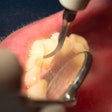
Mandible reconstruction goes far beyond the mere removal of a tumor; it's about restoring a patient's quality of life and their ability to interact with the world. Historically, the focus has been on tumor excision, often with less emphasis on the long-term functional and sensory outcomes.
However, as surgical techniques and cancer treatments advance, patients are living longer, making their quality of life after surgery increasingly important. The mandible is crucial not only for daily functions, such as eating and speaking, but it's also part of nearly every social interaction our patients encounter.
When tumor removal also involves the resection of neural structures, effective reconstruction must address more than just the physical structure. It also involves restoring sensory nerve function to help patients regain as much normalcy as possible. The importance of addressing nerve involvement cannot be overstated.
What does a patient's quality of life look like if they are left with a permanent functional deficit from a loss of sensation? It means turning down social invitations because eating in public brings constant worry that they won't feel food stuck on their faces. It's struggling to nail a job interview because their speech doesn't sound normal. It's not being able to feel a kiss or a smile. Or, worse, it's pain.
However, as functional reconstruction evolves, restoring sensation is a crucial part of surgery that helps patients return to normalcy. It's the next step to help ensure our patients feel "whole" again. Nerve repair during mandibular reconstruction can save patients a lifetime of struggle with sensation loss.
The next step in mandibular reconstruction
The history of mandibular surgery and reconstruction is a journey of significant advancement. Decades ago, surgeons focused almost exclusively on tumor excision, often resulting in physical deformities and a lack of functional restoration. The primary goal was to save lives, with little consideration for the postoperative quality of life. Patients often experienced disfigurement, chronic pain, and functional impairments.
In recent years, however, our field has witnessed remarkable progress and capabilities that allow us to improve patient quality of life in new ways. Procedures that were once considered impossible have become standard practice. We now aim to restore the affected areas' structural integrity, aesthetics, and function. If we look through our patients' eyes, isn't feeling also function? I think they would consider the ability to eat and speak normally a part of living a fully functional life.
Just as jaw reconstruction and dental implants have become routine, nerve reconstruction should also become a standard consideration. In my own practice, integrating nerve reconstruction has shown profound benefits. Patients today are informed and proactive about their treatment options, and incorporating nerve repair has become a competitive edge and a testament to advanced patient care. Those wishing to remain top of mind for patients may consider this technique a competitive advantage.
Quality of life impact: Sensation vs. deficits
The impact of nerve deficits on patient quality of life is profound. Patients who do not undergo nerve reconstruction face significant challenges that go beyond the lack of sensation. Nerve deficits can reduce patient life satisfaction by 28%. Studies also show that 70% of patients with dental or lingual nerve injuries struggle to enjoy socializing daily, and more than half struggle to eat multiple times a week.
Patients who do not undergo nerve reconstruction have a 43% higher chance of experiencing chronic postsurgical pain or post-traumatic trigeminal neuropathic pain. The lack of sensation is debilitating, causing discomfort in social situations and affecting intimate and emotional experiences. This is not a condition we should ask patients to adapt to.
In comparison, patients who undergo nerve repair during mandibular reconstruction are often spared these lifelong struggles. Nerve restoration can save patients from permanent deficits, lost function, and chronic pain. Studies demonstrate that nearly 90% of inferior alveolar nerve reconstruction patients achieve functional sensory recovery within one year.
Patients who regain sensation are exceedingly happy, and it becomes a focal point of their recovery discussions.
Transformational impact on patients
One patient I worked with was an internal medicine physician who needed jaw reconstruction. She wanted to feel like herself again, not only for the rest of her life but also for her wedding, which took place just five weeks after her surgery date. Our team allowed her to enjoy her wedding with minimal visible impact from the surgery. And now, several months postoperation, she can fully feel her new husband's kiss.
Another patient of mine fully illustrates why sensation is crucial. His career depends on it. John Németh, a professional harmonica player and four-time blues singer of the year award winner, presented to me with an ameloblastoma and underwent bilateral jaw reconstruction that included sensory restoration, a true risk for a professional who relies so heavily on his lips and mouth to perform properly. While there were concerns about how surgery and potential facial numbness could affect his confidence and performance, John sought me out to perform the procedure so he could continue his career and live a full, musically driven life again. He's back on tour and recently won the 2024 Blues Music Award for Soul Blues Male Artist.
The future of nerve reconstruction
Surgical techniques and technological advancements have made procedures like nerve grafting more accessible and effective. We must strive for broader adoption of these techniques to create a more holistic treatment experience that accounts for the patient's quality of life far beyond surgery.
We have the ability to restore patients as close to normalcy as possible. Medicine and surgery are ever-evolving, and our goal should be to offer the best possible outcomes for our patients. Helping our patients feel whole again should be a priority in head and neck surgery, and nerve reconstruction sets a new standard for patient care.
Dr. James C. Melville is a tenured professor in the department of oral and maxillofacial surgery, oral, head and neck oncology, and reconstructive surgery at the University of Texas Health Science Center at Houston. He is a diplomate of the American Board of Oral and Maxillofacial Surgery and a fellow of the American Association of Oral and Maxillofacial Surgeons, the American Academy of Craniomaxillofacial Surgeons, and the American College of Surgeons. Melville is also the chief editor of the Oral & Maxillofacial Surgery/Dentistry Springer Education video channels.
The comments and observations expressed herein do not necessarily reflect the opinions of DrBicuspid.com, nor should they be construed as an endorsement or admonishment of any particular idea, vendor, or organization.



















